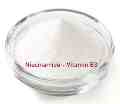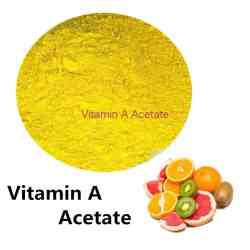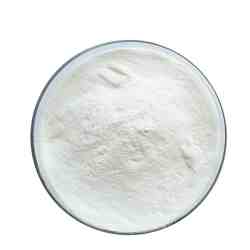Hydrolyzed rice protein is a hidden gem in the world of beauty ingredients—especially for natural and plant-based formulations. It’s derived from rice and broken down into smaller peptides that your skin and hair can easily absorb. Let’s break down its benefits:
Hydrolyzed Rice Protein for Skin
-
Boosts Skin Hydration
-
Acts as a humectant—draws moisture into the skin and helps retain it.
-
Leaves skin looking plump, soft, and refreshed.
-
-
Improves Skin Barrier Function
-
Strengthens the outer layer of skin, helping it resist environmental damage and moisture loss.
-
-
Soothes Sensitive or Irritated Skin
-
Gentle and calming, ideal for redness-prone or reactive skin.
-
-
Anti-Aging Properties
-
Promotes smoother texture and elasticity by supporting collagen production.
-
Helps reduce the appearance of fine lines and dullness.
-
-
Brightens Skin Tone
-
Some studies show rice peptides can inhibit melanin production, which may help with dark spots or uneven skin tone.
-
♀️ Hydrolyzed Rice Protein for Hair
-
Strengthens Hair Fibers
-
Binds to the hair shaft and fills in gaps in damaged or porous strands.
-
Reduces breakage, split ends, and brittleness.
-
-
Adds Volume & Thickness
-
Coats the hair to increase diameter, making it appear fuller and more voluminous—great for fine or limp hair.
-
-
Improves Shine & Smoothness
-
Seals in moisture and enhances hair texture, leaving it sleek, soft, and shiny.
-
-
Enhances Elasticity
-
Makes hair more resilient to styling damage and environmental stress.
-
-
Helps with Curl Definition (for curly/natural hair types)
-
Strengthens curls and helps maintain shape without weighing them down.
-
How to Use It in Formulations
-
Water-soluble, so it’s perfect for lotions, conditioners, serums, sprays, and creams.
-
Usually used at 1–5% concentration.
-
Add it to the water phase of your formulation, and avoid heating too high (keep below ~40°C if possible).
Products You’ll Find It In:
-
Leave-in conditioners
-
Hair masks and strengthening treatments
-
Face mists and toners
-
Anti-aging serums
-
Lightweight moisturizers
DIY Volumizing Hair Mist with Hydrolyzed Rice Protein
Perfect for: Fine, limp, or damaged hair. Adds volume, strength, and shine.
Ingredients:
-
100 ml distilled water or rose water
-
5 ml hydrolyzed rice protein (5%)
-
5 ml panthenol (provitamin B5 – optional, for softness & strength)
-
10 drops lavender or rosemary essential oil (optional, for scalp health & scent)
-
0.5–1 ml preservative (like Optiphen or Leucidal SF, according to supplier instructions)
Instructions:
-
In a clean spray bottle, add water or rose water.
-
Stir in the hydrolyzed rice protein and panthenol.
-
Add your essential oils and preservative.
-
Shake well before each use.
How to Use:
-
Spray on damp or dry hair, focusing on roots and mid-lengths.
-
Use before blow-drying or air-drying for extra body and texture.
DIY Skin-Brightening & Hydrating Toner with Hydrolyzed Rice Protein
Perfect for: Dull, dry, or tired-looking skin. Helps hydrate, firm, and brighten.
Ingredients:
-
90 ml distilled water or cucumber hydrosol
-
5 ml hydrolyzed rice protein (5%)
-
3 ml glycerin (optional, for extra hydration)
-
1 ml niacinamide (optional, for brightening)
-
0.5–1 ml preservative (e.g. Geogard or Optiphen)
Instructions:
-
Combine all ingredients in a clean glass bottle or spray bottle.
-
Shake well to mix.
-
Store in a cool place, away from sunlight.
How to Use:
-
Apply after cleansing with a cotton pad or spritz directly on face.
-
Follow with serum or moisturizer.
DIY Hydrating + Brightening Facial Toner
With Hydrolyzed Rice Protein, Glycerin, and optional Niacinamide
What It Does:
-
Hydrates and softens the skin
-
Supports collagen and skin elasticity
-
Helps brighten and even skin tone
-
Gently firms and reduces the appearance of fine lines
Full Ingredient List & Why Each Matters:
| Ingredient | Purpose |
|---|---|
| 90 ml Distilled Water / Cucumber Hydrosol | Base; hydrates and soothes skin |
| 5 ml Hydrolyzed Rice Protein (5%) | Strengthens skin barrier, firms, brightens |
| 3 ml Glycerin | Humectant; draws water into the skin |
| 1 ml Niacinamide (2% optional) | Brightens, refines pores, reduces inflammation |
| 0.5–1 ml Preservative | Prevents microbial growth (e.g. Geogard, Optiphen) |
️ How to Make It:
-
Sanitize your tools, bottle, and workspace with rubbing alcohol or boiling water.
-
In a clean mixing beaker or bowl, add your distilled water or hydrosol.
-
Stir in the glycerin, hydrolyzed rice protein, and niacinamide (if using).
-
Add the preservative according to your supplier’s instructions.
-
Mix well and pour into a dark glass spray bottle or toner bottle.
-
Label it with the name and date—store in a cool, dry place (or fridge if you want an extra-refreshing mist!).
How to Use:
-
Apply to clean skin with a cotton pad or spritz directly onto face.
-
Use morning and night, after cleansing and before serum or moisturizer.
-
Follow up with SPF in the daytime, especially if you’re using niacinamide.
⚠️ Notes & Pro Tips:
-
pH Check: Ideal pH for skin toners is around 5.0–5.5. Use pH strips if you’re adding actives like niacinamide to make sure it’s skin-safe.
-
Shelf Life: With a preservative, it’ll last around 3–6 months. Without it (if refrigerated), use within 7–10 days. BUT IF YOU USE PRESERVATIVE, IT WILL LAST 2 YEARS.
-
Customize it!
-
For oily/acne-prone skin: add a drop of tea tree or green tea extract.
-
For dry/mature skin: sub in rose water for the base, or add hyaluronic acid.
-





Reviews
There are no reviews yet.